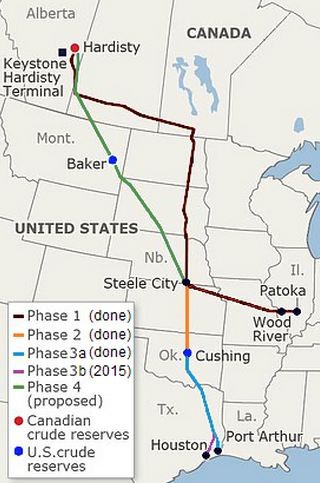Staying true to his word, President Barack Obama immediately vetoed a bill that would have started construction of the controversial Keystone XL pipeline extending from Canada to the United States.
It was the first time Obama exercised his veto power in five years.
It appears unlikely Republican lawmakers will be able to overturn Obama's veto as they lack the needed two-thirds vote in the House and in the Senate to do so. Despite this, Senate Majority Leader Mitch McConnell vowed to hold an override vote, which will take place no later than March 3.
Obama has repeatedly downplayed the economic benefits of Keystone, saying America's energy strategy should be more than a single project.
"Let's set our sights higher than a single oil pipeline," he said during his State of the Union address last January.
The veto came as no surprise to the Republicans. Before Congress passed the bill this month, Obama promised to reject it, saying it improperly infringed on his executive powers by moving the process of reviewing the pipeline from the administration to Congress, according to the Detroit Free Press.
Opponents of the pipeline also point out the ecological damage that might result were the pipeline to rupture or leak. Advocates of the pipeline, mostly Republicans, claim the pipeline will create jobs and enhance America's energy security.
Following the veto, Republicans said the veto Tuesday (Feb. 24) will sour any further cooperation between Democrats and Republicans, according to CNN.
Obama's veto has begun what's expected to be a spate of vetoes on measures Republicans will send to the White House. Obama has already threatened to reject 13 GOP-sponsored bills, including bills rolling back the Affordable Care Act (or Obamacare) and reversing his executive action on immigration.
Obama's veto struck down Phase IV, or the Keystone XK Pipeline Project, of the Keystone Pipeline System.
The Keystone XL Pipeline Project consists of a new 36-inch (910 mm) pipeline from Hardisty, Alberta, through Montana and South Dakota to Steele City, Nebraska. It will transport of up to 830,000 barrels per day (132,000 m3/d) of crude oil from the Western Canadian Sedimentary Basin in Alberta, Canada, and from the Williston Basin (Bakken) region in Montana and North Dakota, primarily to refineries in the Gulf Coast area.



























